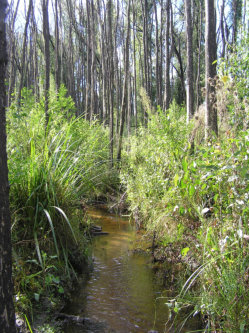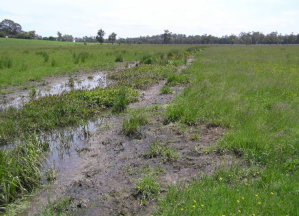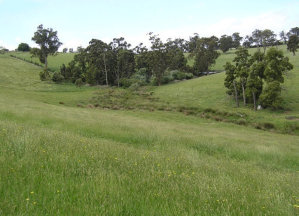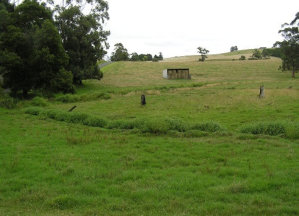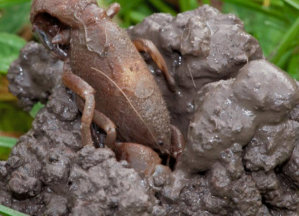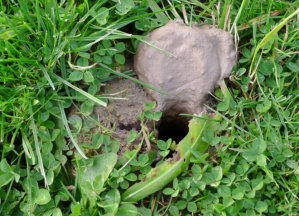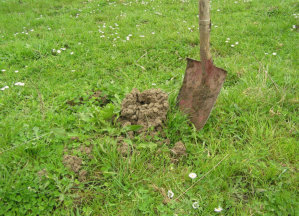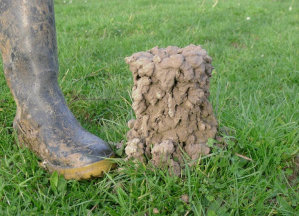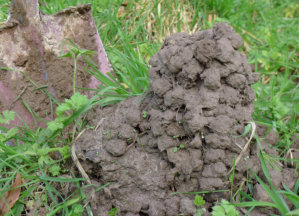
Threatened Burrowing Crayfish of
West Gippsland
Web Site by VP-IT
All photographs © Dr. Beverley Van Praagh, Invert-Eco unless otherwise stated. No image may be saved, copied, reproduced or distributed without prior permission from the copyright owner.
Warragul Burrowing Crayfish
What Looks Like Home For Warragul Burrowing Crayfish? (Habitat) As burrowing crayfish have gills, they require moisture to breath within the soil. This comes from seepages, groundwater, streams or collected run-off. Warragul Burrowing Crayfish build burrows on land down to the water table in a variety of moist habitats. Their habitat differs between Labertouche and the Drouin-Warragul area. At Labertouche, they can be found along the clayey creek banks of Labertouche and Wattle Creek surrounded by remnant Swampy Woodland. This area is known as the Janet Clark Reserve and is formally protected for its biodiversity values including Warragul Burrowing Crayfish. In Drouin and Warragul, their typical habitat occurs in clay dominated soils in open pastures within: Banks of creeks and shallow drainage lines Floodplains Occasionally low lying roadside reserves/naturestrips Recognising Warragul Burrowing Crayfish Chimneys Most burrowing crayfish build mounds of soil in various shapes and sizes around the entrance to their burrows. These are referred to as crayfish chimneys. They are particularly visible in the wetter months of the year and after rainfall when they can pop up in large numbers. Why Build Chimneys? No-one really knows why crayfish build these often ornate structures. The crayfish have to do something with the mud they dig out of their burrows, so perhaps they really are displaying their artistic prowess and expressing their creativity! However, it is more likely that they play a role regulating airflow to increase the oxygen levels within the burrow system. They are also known to plug the entrances with mud during summer and drought to protect their burrows from drying out. The shape and size of the chimneys built by one species of crayfish may vary depending on soil type, their position in the landscape and the maturity or size of the individual. However, chimneys built by Warragul Burrowing Crayfish are often distinctive enough to use them to help identify the presence of these crayfish. They are mainly visible during the wetter months of winter and spring. They are difficult to detect during dry conditions. Warragul Burrowing Crayfish Chimney Features: Chimneys composed of small, spherical balls of soil, with each soil ball around 0.5-1 cm (picture A below) Narrow burrow entrance and burrow system (< 2 cm) (pictures A & D below) Small and compact (generally between 2-5 cm but < 8cm tall and 5 cm wide) (pictures A & B below) Often singular, but may consist of a cluster of chimneys (picture C below)
Click an image to enlarge
Click image to enlarge

Further information:
Fact Sheet: Warragul Burrowing Crayfish - Recognising & Protecting Crayfish Habitat West Gippsland Burrowing Crayfish


Click image to enlarge
Woodland Habitat At Labertouche Creek Site
Pasture Habitat In Warragul And Drouin Along Drainage Lines, Floodplains, Creeks And Wetlands
Click an image to enlarge



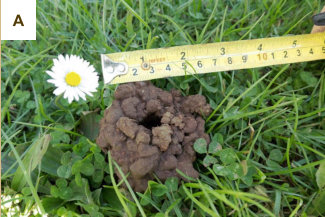
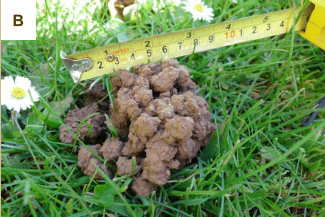
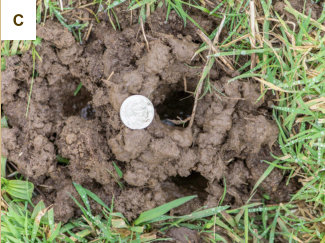
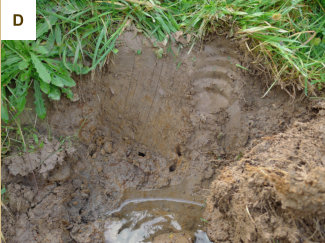
Click image to enlarge
Warragul Burrowing Crayfish at the
entrance to its burrow
Click an image to enlarge
Other crayfish chimneys that may be found within the same region as Warragul Burrowing Crayfish showing a variety of shapes and sizes


